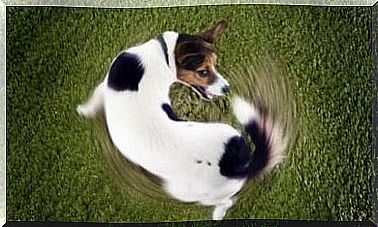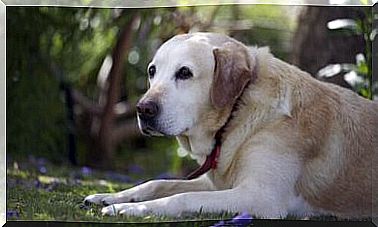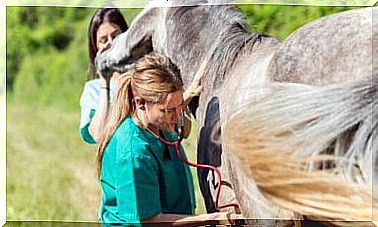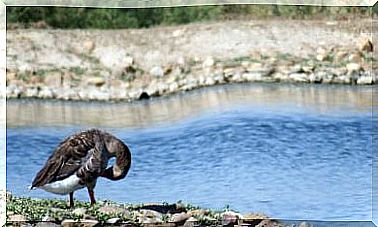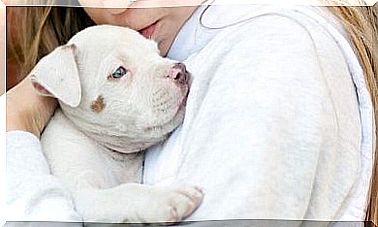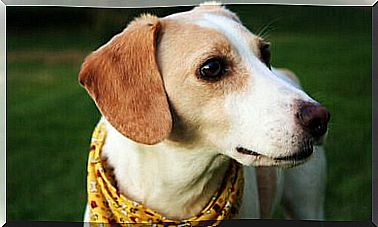Dog Bath: When Should We Do It?
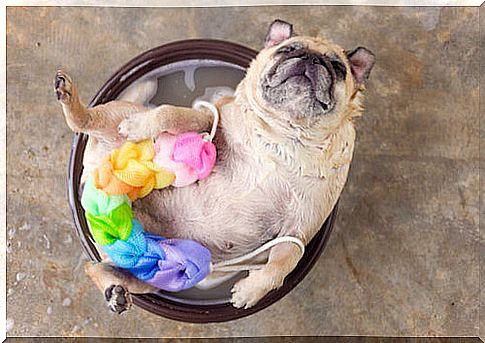
Having a pet at home isn’t just about enjoying their company in good times. It is important to take care of him paying attention to his hygiene and, in general, to his health conditions. This requires constant effort, but we certainly all agree that it is worth it. Today we will tell you when and how to bathe your dog.
If your faithful friend is a dog, you need to know when it’s time to bathe him. Your pet’s hygiene is of fundamental importance for its physical and mental well-being. Therefore, today we will clarify all your doubts on the subject.
The importance of bathing the dog
Dogs run, lie down and get dirty all the time. Hence, you need to wash them so that they are always clean and good looking. However, dogs don’t need to wash every day and have different needs than humans.
A dog cannot bathe every day as it would be counterproductive to his health. He may even die of a cold, especially if he’s a puppy. We must not forget that the hygiene parameters of our species are very different from those of other mammals.
That’s why it’s important to know when to bathe your dog, at what age, how often and what products to use. Or, if you decide not to bathe him, you need to know how you can take care of his hygiene. Bathing or not bathing your dog depends on several factors that we will see later.
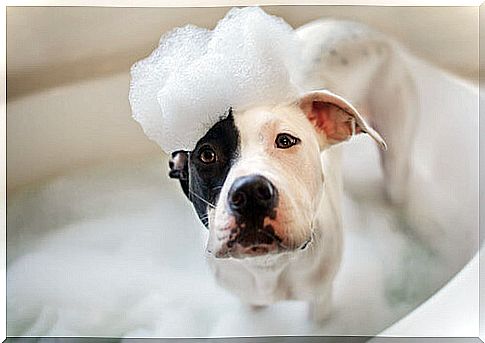
When to bathe your dog based on the type of coat
The hair of the dogs indicates their state of hygiene and if they need to be washed. It is not very difficult to analyze, it can be seen with the naked eye. The shorter the dog’s coat, the less dirty it feels. Conversely, if the hair is thick and abundant, the dirt will be more evident. In addition, the dog will give off a more intense smell.
Depending on the type of hair, the frequency with which to bathe the dog will be decided. So, to know when to wash your dog, you can follow the following guidelines:
- Short hair (not very abundant). You can wash the animal once every two months.
- Long and abundant. You can wash your dog once a month.
- Medium length coat. You can wash your dog once every month and a half.
If you don’t want to bathe him, one piece of advice we can give you is to brush your dog daily. In this way, you can remove dirt, eliminate dead cells and distribute the fatty acids of the animal’s skin.
To do or not to bathe according to your pet’s lifestyle
Each dog has its own character. If your dog is very active, plays often and likes to lie down on the ground, you will know for yourself when it is time to bathe him. Dogs that frequently carry out activities in open spaces, on the beach, in the hills or in the countryside, get more dirty than those less active and more homely.
We want to remind you that the soaps and shampoos used to wash the dog can have the opposite effects from those desired. Some products dry out the skin and deplete the body’s natural oils which allow the dog’s coat to shine and remain in good condition. In addition, the natural oils present in the dog’s skin protect it from dermatological diseases.
Other ways to know when to bathe your dog
In this life, not everything is governed by hard and fast rules. Therefore, it is sometimes necessary to assess whether it is appropriate to bathe the dog based on certain parameters. Some of them are:
- During the moulting period, it is important to brush your dog daily to remove dirt and knots. During this time, you can bathe your dog more frequently.
- If the dog is feeling hot, especially in the summer, a cold water bath may be a good option.
- When the fur smells bad, bathe the dog.
- If the dog has been exercising, a sprinkle of water will clean his coat.
- Sometimes dogs are very curious. If your pet has come into contact with toxic substances, bathe him immediately and take him to the vet.
- If your dog has become soiled with grease or oil, you must remove these substances from his coat by bathing him.
When it is not advisable to bathe the dog
It is not recommended to bathe the dog if there are symptoms of distemper. In these cases, you need to take the dog to the vet for a checkup. If the vet confirms that it is distemper, you should not wash the dog. This is a serious disease and its complications can lead to death. In this case, the dog needs drug treatment and rest and not thermal shocks such as those caused by a bath.
Products for bathing your pet
Before bathing your dog, it is important that you know that its pH is higher than ours. Therefore, we advise you to choose a soap suitable for its pH. Never use products intended for humans as they are too acidic for the dog’s skin.
False beliefs about bathing a dog
As with all things in life, there is no shortage of myths and false beliefs about bathing the dog. Here are some really surprising ones:
- By bathing, animals lose their skin’s natural oils and damage their pH. This is not true. Your dog’s health can be affected if you bathe him excessively and too frequently, or if he is never bathed. Furthermore, problems only occur if the owner uses products intended for human beings; which we have already talked about previously.
- If water gets into the ears it can cause otitis. If you wash your dog carefully, there will be no problem.
- Dogs that smell are rejected by other dogs. If you bathe your dog, you will know that it smells very strong, and even if it is scented after bathing, it still smells like a wild animal. Therefore, dog shampoos are not a problem.
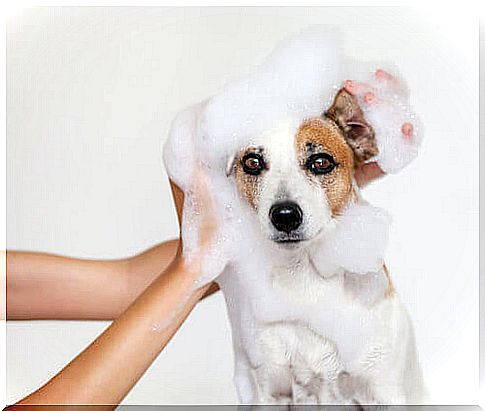
In summary, if you have a dog, you can wash it taking into account the age and frequency of baths. However, we recommend that you follow your veterinarian’s directions. If you follow the correct hygiene rules, you will extend your dog’s life and keep him healthy.


